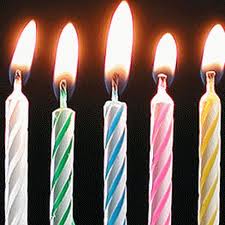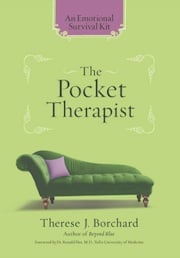
Since I turned 40 over the weekend, I thought we’d discuss the midlife crisis and whether or not it exists…
Am I having a midlife crisis?
Hard to say. Things, for the most part, seem to be getting harder, not easier, and with each passing day, I swear I’m getting more stupid. Case in point: a guy two doors down has a car detailing business. Up until yesterday, I just thought he really liked washing his car.
“You didn’t see that the car was different each time?” Eric asked me, shaking his head.
“Nope.”
I see it with my friends, too. Girlfriends who have sweated their way to a corner office in respectable accounting firms have decided to drop it all to nurture their inner artist and see if they can make a living on their colorful creations.
So it was with interest that I read Stefanie Weiss’s archived piece in the Washington Post about the midlife crisis (which you can get to by clicking here). Is it for real? To test her theory she interviewed five experts: two psychologists, an economist, a journalist, and a cultural anthropologist.
Here’s what they had to say.
Expert #1: It’s not about the nines, and it’s not about a midlife crisis, either.
Laura Carstensen, a psychology professor and founding director of the Stanford Center on Longevity, flat-out rejected my theory of a series of midlife crises. In fact, she said, for most people, even one crisis in midlife would be a lot.
“There is no empirical evidence for a midlife crisis,” Carstensen said. “It’s just not typical that people in midlife are unhappy. Now,” she was quick to add, “that doesn’t mean that people in the middle of their lives don’t sometimes have a hard time. They do. But they aren’t more at risk for a crisis in midlife than at other times in their lives.”
The real crisis, Carstensen suggested, may be at a much earlier nine: 19. “Negative emotion declines from early adulthood to pretty advanced old age. That’s been shown in dozens of studies. Twenty-year-olds show the highest levels of negative emotions, and it’s a steady linear decline to 60, when it levels off. You begin to see a slight upturn in the 70s, but it never returns to the levels you see in early adulthood.”
Why? “People get better at regulating their emotions. People get better at managing life.”
And those men in their 50s who are buying tiny sports cars?
“It finally occurred to me,” Carstensen said. “It’s the first time in their lives they can afford the dream car.”
Expert #2: It is about a worldwide pattern of midlife unhappiness, but it doesn’t necessarily happen on the nines.
David Blanchflower, an economics professor at Dartmouth, analyzed data from millions of people in dozens of countries, all the way from Albania to Zimbabwe. In this month’s issue of Social Science & Medicine, he and a co-author conclude that “a typical individual’s happiness reaches its minimum — on both sides of the Atlantic and for both males and females — in middle age.”
“I’m not saying there is a midlife crisis,” Blanchflower told me, “but this awfully looks like it.” So much for consensus in academe.
Who’s right? Blanchflower is no shrinking violet when it comes to defending himself. Look at the “sheer power” of the study, he said. “It’s 72 countries. Two million people. Beat that!”
Not content to leave it there, he actually said, “My stick is bigger than your stick,” proving that a cigar is never just a cigar.
Expert #3: It’s not about anticipating birthdays. It’s about anticipating death.
Wall Street Journal columnist Sue Shellenbarger writes that her own midlife crisis “erupted at age 49.” Surely, she would see the value of a theory based on the nines.
“My age didn’t have anything to do with my crisis,” she said. “The death of my father triggered it for me.”
In her book “The Breaking Point: How Female Midlife Crisis Is Transforming Today’s Women,” Shellenbarger suggests that many women wake up one day with the realization that they’ve been sitting on deep, unfulfilled desires for adventure, love, artistic expression, spirituality and success in the world. Eventually, they can’t sit still any longer.
Shellenbarger herself started skiing down dangerous slopes and driving all-terrain vehicles way too fast. The pull to the wild side landed her in a hospital — and on a seven-year journey to “integrate” the parts of herself that had been suppressed too long.
It’s not about the nines, Shellenbarger said. “It’s all about anticipation that you’re going to die without having given expression to parts of yourself that you cherish.”
Enter the Grim Reaper, coming too soon to a theater near you.
Expert #4: It’s not about death. It’s about the birth of a second life cycle.
Carlo Strenger, an associate professor of psychology at Tel Aviv University and co-author of a recent Harvard Business Review article on the “existential necessity of midlife change,” said the midlife crisis today is evidence of what he calls cultural lag.
Although life expectancy at birth in the United States nears 80, he said, “we still live in a culture which seems to acknowledge only two adult ages: extended youth and old age.” Those in midlife crisis are in “a protracted panic reaction at the loss of youth.”
Witness the growing coffers of plastic surgeons and makers of anti-aging creams.
Instead of joining the desperate effort to deny aging, Strenger suggests that we knock down the myth of midlife as the onset of decline and build up the notion of a “second life cycle” full of new possibilities founded on self-knowledge and experience.
“Imagine — as we often have people do in psychology experiments — that you’re 20,” he said, “and you’re told you have an incurable illness. You’ll be fine for the next 30 years, then you’ll die at 50. What would you do? You’d live a full life. That’s exactly the situation 50-year-olds are in now. Statistically you have another 30 years. What are you going to do with your next decades?”
It’s time, Strenger said, to move “from midlife crisis to midlife transition.”
But where does that leave the nines?
Expert #5: It’s not about numbers. It’s about radically reshaping longer lives.
No one was buying my theory. I made one last, desperate call to Mary Catherine Bateson, a cultural anthropologist and author of “Composing a Life.” She’s a visiting scholar at the Center on Aging and Work/Workplace Flexibility at Boston College.
The erudite Bateson waxed sarcastic. “Suppose I were to say that the years of greatest development for me are going to be where the two numbers are the same: 22, 33, 44, 55, 99. Wow! You could say that just as well.”
She gathered steam. “How about organizing our lives in periods of 12 years — duodecades — rather than periods of 10. At the end of your fifth duodecade, you’d be 60. Get it?”
Um, yeah.
“It’s just fashion and cliche to insist on a zero as drawing the line,” she said. I was sinking lower by the minute. Bateson switched to the high road.
Today there are many ways to adapt to longer lives, she said. You can tack years onto the end of life — “you would be sick for longer, decrepit for a longer period.” You can “stretch each stage of life just a little longer: more years in school, more years married before kids, and so on.” Or you can insert years into the middle of life, starting more new chapters, new relationships, new careers.
“If you add a room to a house,” Bateson said, “it turns out to change the function of every room in the house. You don’t leave your tennis racket in the same place, you don’t drink your coffee in the same place. The flow of the whole house changes. ‘Add’ is the wrong word. The effect of increasing the size of the total house [adding years to life, for those who are metaphorically challenged] is to reconfigure it. It’s almost as if you were multiplying rather than adding.”
In that scenario, Bateson said, “if people feel free to learn and grow and explore, maybe they don’t end up feeling trapped, and they don’t have to have a crisis at all.”
* Click here to subscribe to Beyond Blue and click here to follow Therese on Twitter and click here to join Group Beyond Blue, a depression support group. Now stop clicking.

